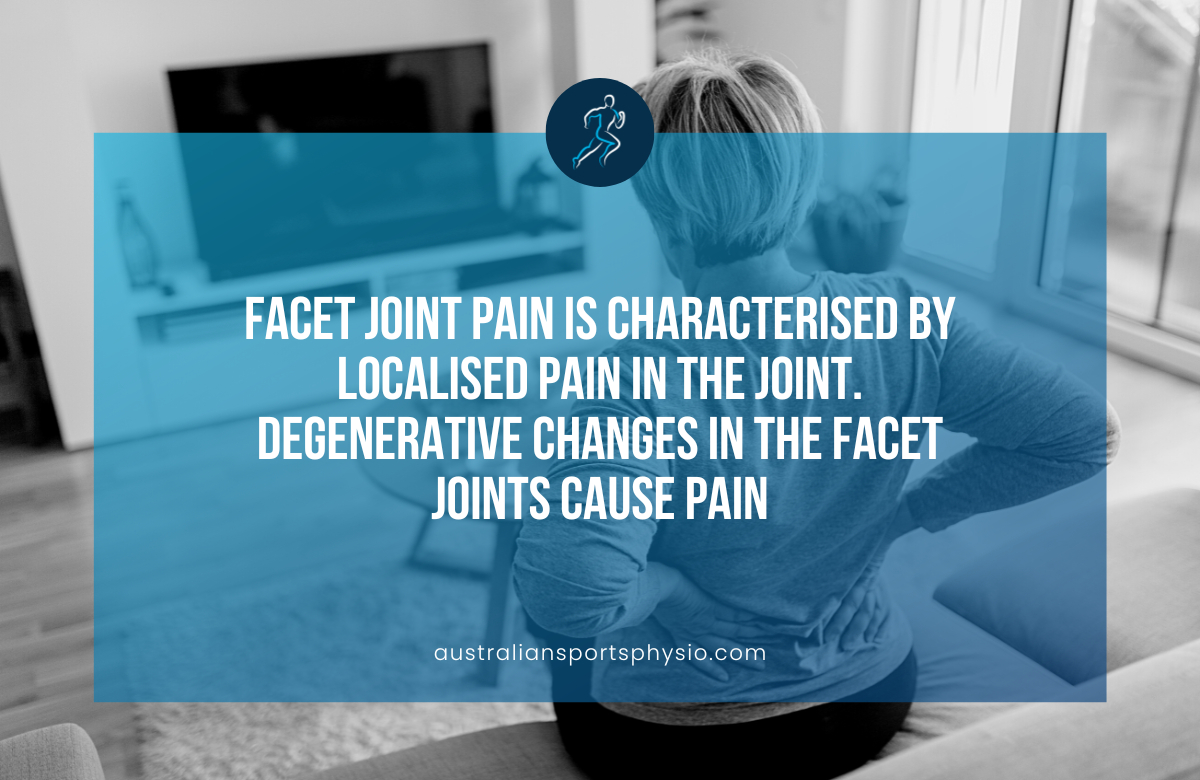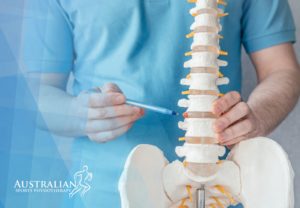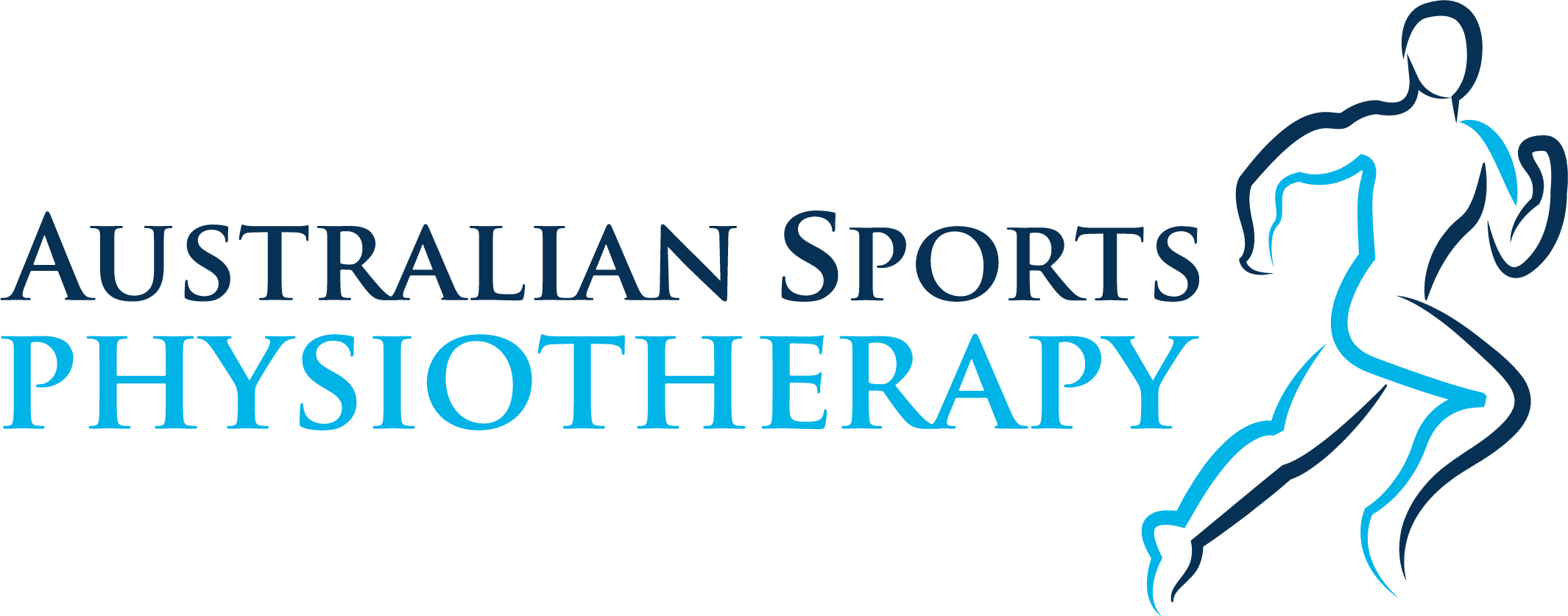Whether your joint pain is caused by arthritis, age-related wear and tear or injury, physiotherapy can help reduce joints’ inflammation and improve flexibility.
Physiotherapy focuses on treating musculoskeletal disorders with various physical treatments, emphasising exercises and movement rather than medication.
Physiotherapy treatment for facet joint pain is an excellent option for those who want to relieve or manage their symptoms. Physiotherapy helps to reduce inflammation, reduce pressure on nerves, promote healing and provide relief from chronic lower back pain.
With targeted physiotherapy approaches, patients can experience lasting relief from their facet joint pain.
What are facet joints?
The vertebrae are individual bones that make up the human spine. These tiny bones are stacked on top of one another. Each vertebra has three parts: a large disc and two projections behind it known as facets. These three structures form a tripod that provides stability and flexibility to the spine. It enables us to bend and twist while keeping the vertebrae together.
The facet joints connect the facets of the vertebrae to each other. Each joint is cartilage-lined and contains lubricating synovial fluid within a joint capsule. When the facet joints are in good condition, they glide smoothly and allow us to move our back and neck without pain. Facet joints that are healthy also help to keep the spine stable and prevent over-twisting and over-bending.
Common causes of facet joint pain?
Facet joint pain develops when the cushioning cartilage between the facet joints is damaged or breaks down.
Facet joint syndrome: This is caused by various factors, including the location of the joint. The location of the facet joint injury can also affect the pain.
Lumbar joint syndrome: Commonly caused by ageing degeneration, strain misalignment and may cause lower back pain.
Cervical and thoracic joint syndrome: This condition is commonly caused by trauma injuries such as car accidents (whiplash), falls, and neck injuries ( wry neck, sports injuries).
Various conditions can influence the force on the lumbars spines facet joints and can increase the risk of lumbar facet joint pain. These are some examples:
- Injuries caused by overuse (i.e. traumatic fall, sporting injury, etc.).
- Obesity.
- Spinal disorders such as scoliosis or kyphosis.
- Minor injuries: Caused by repetitive manual labour, sports, and activity.
- Poor posture and movement, for instance, kyphosis or excessive lumbar lordosis.
Common symptoms of facet joint pain
Facet joint pain is characterised by localised pain in the joint. Degenerative changes in the facet joints cause pain. Simply put, the cartilage in the facet joints degrades and inflames. Damage to the cartilage causes the bones in the joint to rub together, resulting in pain, swelling, and stiffness.
Back pain is usually restricted to one side of the spine. This is generally exacerbated by bending to the affected side or extending the spine (backward bending). In general, the back will feel stiff in the morning.
In some cases, the nerve roots that emerge from the spinal cord at the level of the problem may be involved, causing pain to refer to the buttock, groin or hamstring area. This problem is frequently exacerbated by prolonged sitting or standing in one position.
Arthritis can also affect facet joints like any other joint in the body. Facet joint syndrome is a combination of symptoms. These symptoms are caused by a spine arthritis-like condition. This condition is also known as facet arthropathy and facet joint osteoarthritis.
Physiotherapy for facet joint pain
Physiotherapy is a safe and effective way to treat facet joint pain. It can help reduce pain, improve mobility and function, and prevent further injury. With the right treatment plan, you can get back to enjoying your life without the pain of facet joint pain.
- Exercises to strengthen and stretch your lumbar spine to keep it as strong and flexible as possible.
- Massage and heat treatments can help to relieve muscle spasms and pain in the affected area.
- Postural advice and exercises are an important part of physiotherapy treatment to alleviate any additional strain on your lower back.
- Joint mobilisation, which involves applying pressure to or rotating a stiff joint, can help the affected or nearby joints move more freely.
- Joint manipulation and cracking can help relieve a buildup of pressure on the stiff joints.
- Ergonomic evaluation
- Soft tissue treatment
- Core stability training
- Hydrotherapy
- Dry needling

Final thoughts on physiotherapy treatment for facet joint pain
If you’re suffering from facet joint pain, it is vital to seek professional help. A physiotherapist can help you assess your condition and formulate an effective treatment plan tailored to your needs.
With their help and the right approach, you can manage the pain and improve your mobility and quality of life. Don’t let your joint pain hold you back – get in touch with one of our physiotherapists today!









